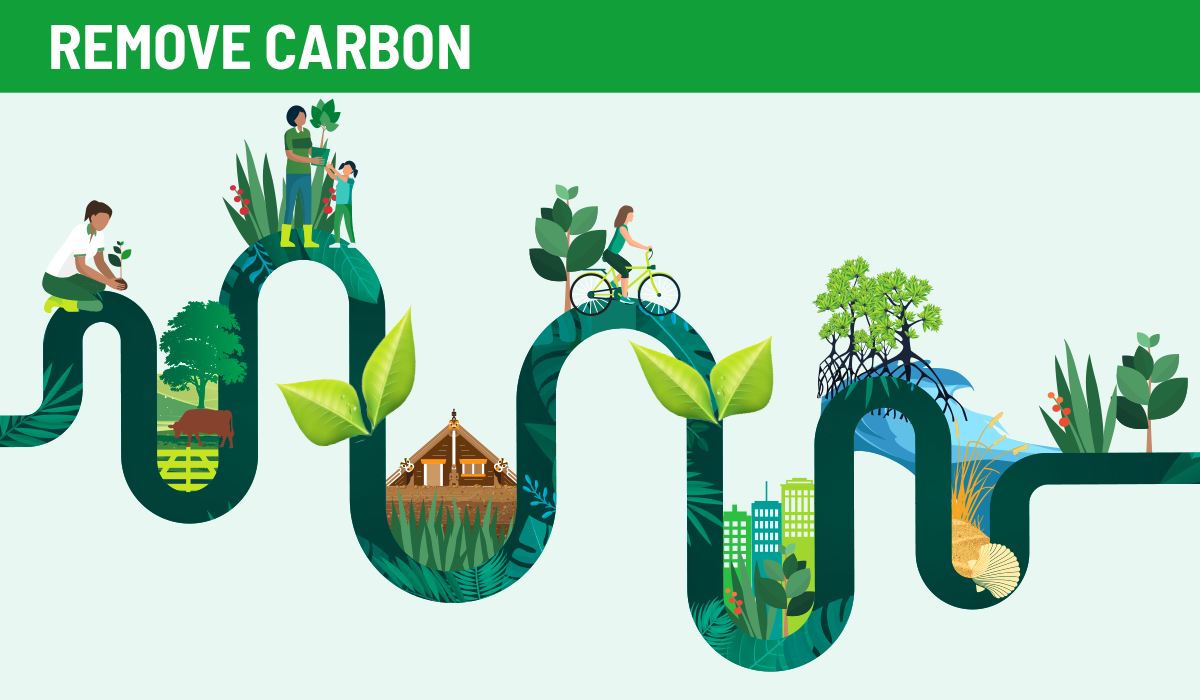Remove carbon
We will help restore a healthy balance to the atmosphere, by enhancing natural processes that capture and store carbon (such as growing trees and protecting wetlands) – and also benefit biodiversity and water quality.
These are our carbon removal goals, and the key activities we plan to undertake over the next three years.

The path to removing carbon.
Ngā uaratanga | Our goals
 |
Native forest plantings remove carbon and bring co-benefits such as heathy waterways and biodiversity. Coastal blue carbon ecosystems are restored and protected as carbon sinks. |
 |
Our region is a leader in removing carbon through the protection, restoration and creation of natural carbon sinks such as wetlands, forests and coastal ecosystems. |
 |
Local manufacturing and heavy industry invest in technology to capture and store carbon, with any necessary carbon offsets invested locally to support carbon removal projects. |
 |
On-farm practices are adopted that store carbon through plantings, soil improvement and forest management to help the primary sector manage emissions. |
 |
Māori connection to land and sea is enhanced through restorative practices that help remove carbon from the atmosphere. |
 |
Our region supports a thriving, innovative carbon removal economy on land and sea. |
Ngā mahi | Our work
 |
Adopt a carbon offset protocol for council that ensures high-quality carbon offset outcomes, including opportunities for investing in verified local projects for biological carbon removal. |
 |
Support appropriate afforestation and on-farm land management programmes. |
 |
Ensure existing and potential carbon sinks, such as coastal ecosystems, forests and peatlands, are well understood and have long-term management plans to enhance carbon storage. |
 |
Work with our regional economic development partners, industry and the primary sector to support carbon removal projects and attract investment in a high-performing, regional carbon removal economy. |
 |
Protect and restore high-value carbon-storing ecosystems in alignment with our freshwater management and adaptation planning programmes, recognising the valuable co-benefits they provide. |
 |
Use spatial planning to plan and optimise carbon removal opportunities and land-use change. |
 |
Help improve understanding of biological carbon storage in Te Taitokerau by supporting research, adopting methods and standards for biological carbon removal planning and regulatory processes, and supporting land-use change. |
